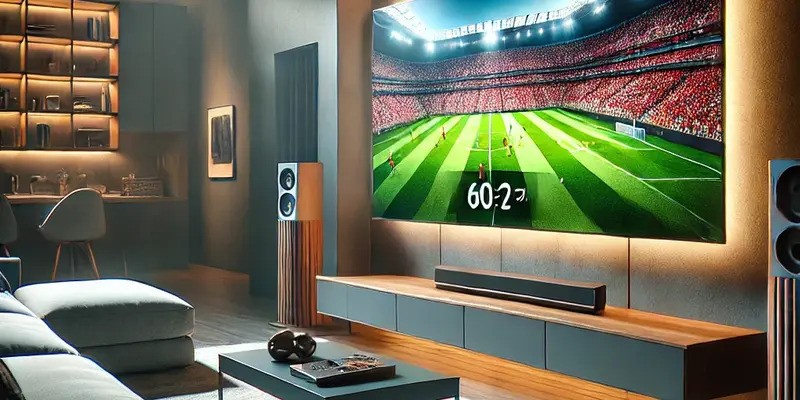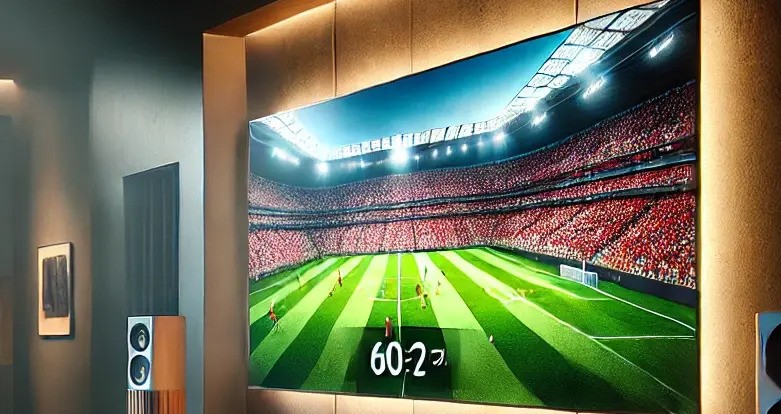Introduction
Selecting the right TV for your space is crucial, especially when considering the 60-inch TV dimensions. Whether you’re upgrading your entertainment system or creating a home theater setup, knowing the specifics of TV size and how it impacts your viewing experience is key. In this article, we’ll dive into everything you need to know about 60-inch TV dimensions, the ideal viewing distance, and how to make the most of your TV’s picture quality for a truly immersive experience.
What Are 60 Inch TV Dimensions?
A 60-inch TV refers to the diagonal measurement of the screen, which helps determine the screen size. However, the overall dimensions of the TV also matter, especially if you’re planning to mount it on the wall or place it on a TV stand.
For a typical 60-inch TV, the dimensions usually look something like this:
- Width: Around 52.3 inches (133 cm)
- Height: Approximately 30.5 inches (77.5 cm)
- Depth: 3.2 to 3.5 inches (8.1 to 8.9 cm), depending on the model
These dimensions can slightly vary between brands and models. Knowing the TV dimensions helps you ensure that your TV will fit comfortably in your room without crowding the space, especially when wall-mounted.
Factors Affecting Viewing Experience
The dimensions of your TV aren’t the only things that affect how good the viewing experience will be. Several factors play into creating the best possible viewing conditions:
- Screen Size: A 60-inch TV provides a large screen that is ideal for a variety of viewing activities, such as watching sports events, movies, and playing games.
- Resolution: Whether you opt for Full HD or 4K UHD, the TV’s resolution is crucial for picture quality. A 60-inch TV with 4K resolution will offer a much crisper, sharper image compared to a Full HD TV, especially when sitting closer to the screen.
- Picture Quality: Factors such as contrast ratio, color depth, and refresh rate all affect the quality of the picture on your 60-inch TV, giving you more clarity and vibrancy in every scene.
The combination of these elements ensures that you get the most from your screen size, especially for sports events and other high-definition content.
Why 60 Inch Is a Perfect Size for Your Living Room
A 60-inch TV is the sweet spot for many households, offering a large screen without overwhelming the room. Whether you’re watching movies or enjoying a sports game, this size is perfect for both small and medium-sized rooms.
For larger living rooms, a 60-inch TV provides a cinematic experience, ensuring that everyone has a clear view of the screen from various angles. Additionally, 60-inch TVs are large enough to enjoy detailed images but not so big that they dominate the space. If you’re considering wall-mounting the TV, a 60-inch size gives you flexibility in terms of room arrangement.
How to Determine Optimal Viewing Distance for a 60 Inch TV
To fully appreciate the picture quality of a 60-inch TV, the optimal viewing distance plays a crucial role. Sitting too close may result in pixelation, while sitting too far might reduce the immersion.
For a 4K UHD TV, the ideal viewing distance is typically between 5 to 8 feet (1.5 to 2.4 meters), while for Full HD TVs, the optimal distance is slightly farther—usually around 8 to 10 feet (2.4 to 3 meters). This ensures that you’re able to see the sharp details and full range of color without pixelated images.
By choosing the right viewing distance, you’ll get the best possible experience from your 60-inch TV, whether you’re watching sports events or enjoying a movie marathon.
Full HD vs. 4K UHD: Which Is Better for a 60 Inch TV?
When it comes to 60-inch TVs, the choice between Full HD and 4K UHD is an important one. While Full HD offers excellent picture quality, 4K UHD takes it to the next level with four times the resolution of Full HD.
If you’re watching content like sports events, a 4K UHD TV is the better choice. The finer details and smoother motion will make fast-paced action easier to follow, giving you a more immersive experience. Plus, streaming services like Netflix, Hulu, and Amazon Prime are increasingly offering 4K content, so having a 4K TV allows you to take full advantage of this high-quality streaming.
Should You Consider a Larger TV?
While a 60-inch TV offers a fantastic viewing experience, some people might wonder whether a larger TV is a better fit. If your living room allows for it, moving up to a 65-inch or even a 75-inch TV could enhance the cinematic effect, especially if you love watching movies or enjoy sports events in high definition.
However, a 60-inch TV offers a perfect balance of size and viewing comfort for many homes. If you’re unsure whether to go bigger, remember that a 60-inch TV still provides a great viewing experience without overwhelming the space, especially for smaller or medium-sized rooms.

How Streaming Services Affect Your TV Choice
Streaming services have completely revolutionized how we watch TV. With the rise of 4K UHD content on platforms like Netflix and Amazon Prime, choosing a 60-inch TV with 4K capability ensures you get the best picture quality available.
If you’re someone who enjoys watching sports events or a wide variety of shows on these services, having a 60-inch 4K TV will offer a more immersive viewing experience. The clarity and detail available on these platforms, combined with the big screen experience, make for a fantastic setup in your living room.
Conclusion
Choosing the right 60-inch TV dimensions for your space can make all the difference in your viewing experience. From the right TV size to the best optimal viewing distance, each factor plays a role in ensuring that you enjoy the best picture quality and immersive entertainment.
Whether you’re watching your favorite shows, enjoying a sports event, or streaming content, a 60-inch TV can elevate your experience. The next time you’re shopping for a new TV, consider how 60-inch TV dimensions can fit into your room and lifestyle to enhance your enjoyment.
For more insights on TV sizes and how they impact your entertainment setup, feel free to check out our detailed guide on the 40-inch TV dimensions at Byte Varsity.
